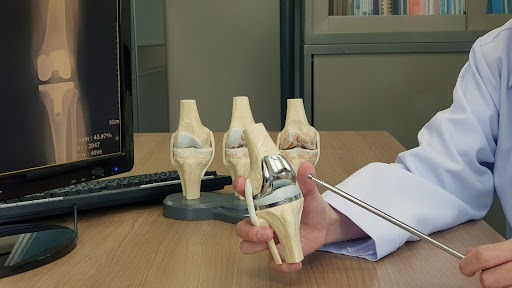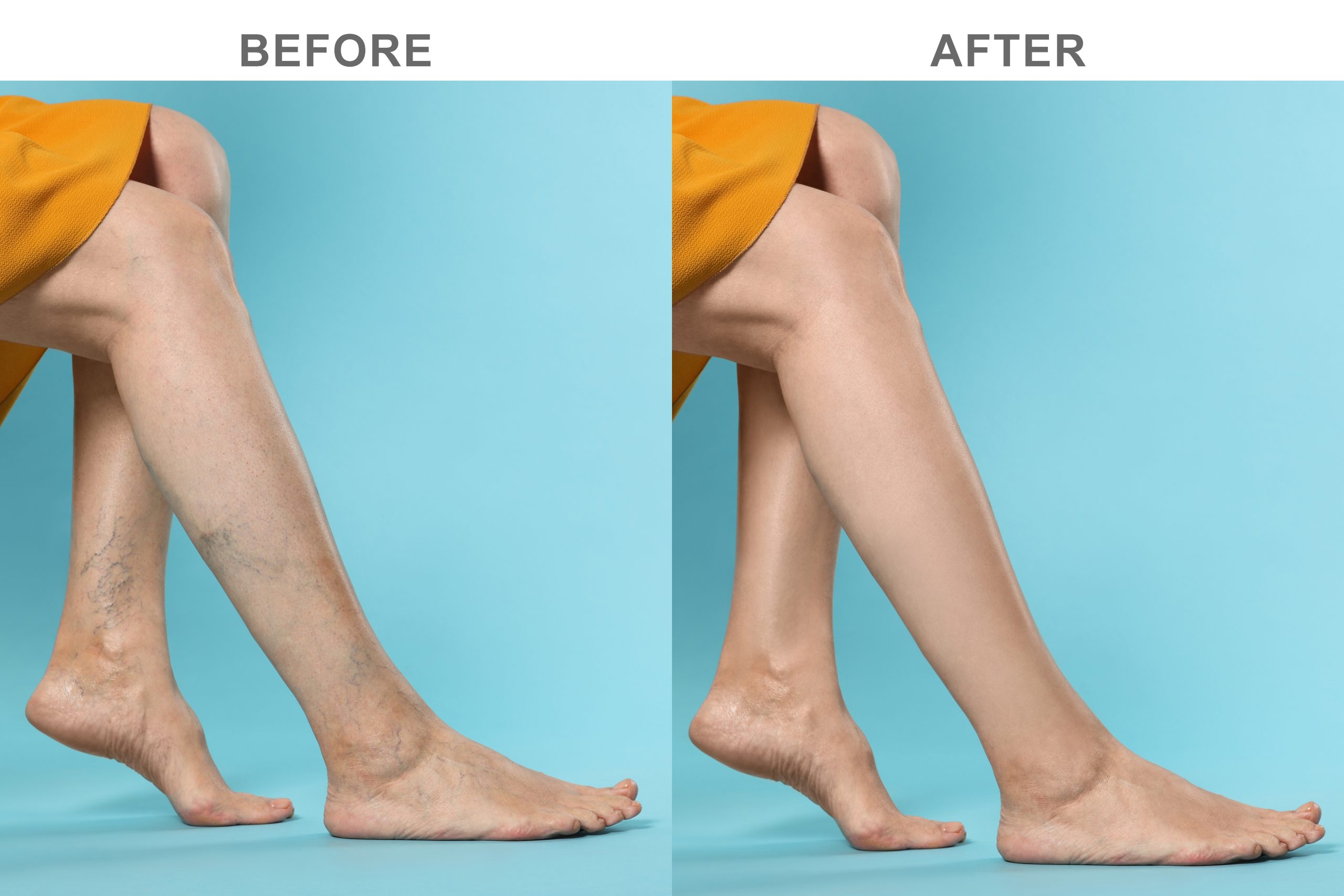Total Knee Replacement
Total Knee Replacement in Younger Patients: Challenges and Considerations

by admin
27th September 2023
8 minutes read
Introduction
With advancements in healthcare technology, knee replacement surgery, officially known as total knee arthroplasty (TKR), has evolved into a fairly common procedure for older adults suffering from severe arthritis or injury. However, in recent years, an increasing number of younger patients are undergoing total knee replacement, marking a shift in the patient demographic landscape.
This trend, driven by several factors such as sports injuries, increased awareness, improved healthcare facilities, and the escalating prevalence of juvenile arthritis, raises several unique challenges and considerations. This article delves into the intricacies of total knee replacement in younger patients, predominantly focusing on the Indian context, considering the rising number of knee surgeries performed there.
Understanding Knee Replacement and its Variations
Knee replacement, or knee arthroplasty, is a surgical procedure that aims to relieve pain and restore function in severely diseased or damaged knee joints. The surgery involves removing the damaged parts of the knee and replacing them with artificial parts, known as prostheses or implants, made of metal, plastic, or ceramic materials. This procedure is performed by a skilled orthopedic surgeon, often assisted by a team of healthcare professionals.
There are two main types of knee replacement surgeries: total knee replacement (TKR) and partial knee replacement (also known as unicompartmental knee replacement).
- Total Knee Replacement (TKR): Total knee replacement, also known as total knee arthroplasty, involves replacing the entire knee joint. This is typically done when all compartments of the knee are damaged or diseased, often due to conditions like osteoarthritis or rheumatoid arthritis. The procedure includes replacing the lower end of the femur (thigh bone) and the upper end of the tibia (shin bone) with artificial components. Often, the underside of the patella (kneecap) is also resurfaced with a plastic component. This is considered major surgery and usually requires a hospital stay, followed by a period of rehabilitation.
- Partial Knee Replacement: Partial knee replacement, or unicompartmental knee replacement, involves replacing only the damaged part of the knee. The knee is divided into three compartments, and if only one or two compartments are damaged, a surgeon may opt for a partial knee replacement.
This surgery typically involves a smaller incision, less bone removal, and potentially a faster recovery compared to total knee replacement. However, if the remaining compartments of the knee become diseased over time, additional surgery may be required.
In addition to these, there is also a procedure known as knee osteotomy where instead of replacing parts of the knee, the bones are cut and realigned to reduce stress on the knee joint. This is usually performed in younger patients where preservation of the natural knee joint is a priority.
Choosing the right type of knee surgery largely depends on the extent of the knee damage, the patient’s age, activity level, overall health, and personal preferences. The decision should be made after a detailed discussion with the orthopedic surgeon and considering all factors, including recovery time and long-term outcomes.
In recent years, advancements in surgical techniques, such as minimally invasive surgery and computer-assisted surgery, have made knee replacement surgeries safer and more effective. Moreover, improvements in the design and materials of knee implants have increased their longevity, offering patients a more durable solution for their knee problems.
The Rising Number of Knee Replacement in Younger Patients
Traditionally, total knee replacement has been a recourse for older adults, generally, those over 65 years, suffering from severe osteoarthritis. However, recent trends indicate a surge in knee replacement surgeries among younger patients, with a significant number of surgeries being performed in India.
Several factors have contributed to this trend. First, the advent of sports and fitness culture has led to an increased incidence of sports-related knee injuries. Second, rheumatoid arthritis and juvenile arthritis, which affect younger individuals, are also leading to the necessity of knee operations in this age group. Lastly, advancements in medical technology have made knee replacement surgery more accessible and affordable, contributing to its increasing popularity among younger people.
Challenges and Considerations in Younger Patients
While total knee replacement offers several benefits, performing this procedure in younger patients presents a unique set of challenges.
- Longevity of the Implant: Younger patients are generally more active, which can lead to quicker wear and tear of the knee implant. The average life of a knee implant is 15-20 years, after which a revision surgery may be required. Given the longer life expectancy of younger patients, the likelihood of needing revision surgery increases, which may involve additional costs and risks.
- Higher Expectations: Younger patients often have higher expectations regarding the outcome of knee replacement surgery. They aim to return to their pre-surgery level of activity, including participating in sports or high-impact activities, which may not always be feasible. It is essential for healthcare providers to manage these expectations realistically.
- Bone Preservation: Younger patients have a higher bone density, which can make the surgery technically more challenging. The surgery must be performed in a way that preserves as much of the natural bone as possible, especially considering the potential need for future revision surgeries.
- Cost Considerations and Recovery Time: The cost of knee replacement in India can vary significantly, depending on several factors like the type of implant used, the hospital, the surgeon’s expertise, and the city. While India offers some of the best knee replacement surgeons and healthcare facilities at competitive costs, the expense can still be substantial, especially for younger patients who may be at the prime of their earning potential.
The recovery time for knee replacement typically ranges from 3 to 6 months, which can affect a younger individual’s work life and financial stability. Therefore, comprehensive pre-surgery counseling about recovery timelines, post-operative care, rehabilitation, and potential financial implications is crucial.
Navigating the Path to Knee Surgery in India
Choosing the right healthcare provider for total knee replacement surgery is a critical decision. India, known for its medical tourism, offers some of the best knee replacement surgeons, state-of-the-art facilities, and affordable healthcare services. However, it’s important to thoroughly research and consult with healthcare professionals before making a decision.
Before and after knee replacement surgery, patients must adhere to the recommended recovery plan, including physiotherapy and lifestyle modifications, to ensure a successful outcome. They should also follow up regularly with their healthcare provider to monitor their progress and address any potential complications at the earliest.
Conclusion
The rising trend of total knee replacement surgeries in younger patients poses unique challenges and considerations. However, with careful planning, appropriate patient counseling, and advancements in surgical techniques and implant technology, these challenges can be effectively addressed. Despite the hurdles, the prospect of a pain-free life and improved mobility makes total knee arthroplasty a viable option for younger patients suffering from severe knee damage.
How Can Medfin Help?
Medfin is a daycare surgery expert providing access to the latest surgical procedures and top doctors in your city at affordable prices. Medfin provides you access to top doctors and surgeons with 10+ years of experience. With Medfin, you can leave your hassles behind and focus on your health. From instant consultations to paperwork assistance, we have got you covered with everything. So why wait? Call us today!
FAQs
1. What are the psychological effects of knee replacement on younger patients?
Younger patients may experience emotional challenges after knee replacement, such as adapting to the limitations of the prosthetic knee and coping with the psychological impact of undergoing major surgery at a relatively young age. Support from healthcare professionals and loved ones can be crucial during this period.
2. What are the alternatives to knee replacement for younger patients?
Younger patients may explore non-surgical options, such as physical therapy, medications, injections, and arthroscopic procedures, before considering knee replacement. These alternatives aim to alleviate pain and improve function.
3. Can knee replacement surgery improve the quality of life for younger patients?
Yes, knee replacement surgery can significantly improve the quality of life for younger patients by reducing pain, improving mobility, and allowing them to engage in activities that were previously limited by knee issues.
4. Can younger patients return to sports and physical activities after knee replacement?
Yes, many younger patients can resume sports and physical activities after knee replacement, but it depends on the individual’s condition, type of surgery, and post-operative recovery. High-impact sports may need to be avoided, while low-impact activities can often be resumed.
5. How long do knee replacements last in younger patients?
Knee replacements in younger patients may not last as long as those in older patients due to higher activity levels. However, advancements in implant design and surgical techniques have improved the longevity of knee replacements, with many lasting 15-20 years or more.
Orthopedic Treatments
Total Knee Replacement Surgery (TKR)| Robotic Total Knee Replacement Surgery | Open Acl Repair Surgery
Leading Orthopedic Surgeons in Bangalore: Your Trusted Experts
Madan Temker | Karthik G | Sharath Kumar Shetty | Somasundaram Sekar | Vinit M Oswal
Medfin hospitals in Bangalore
CATEGORIES
- ACL Reconstruction
- Anal Fissures
- Anal Fistula
- Appendicitis
- ASK A DOCTOR
- Benign Prostatic Hyperplasia
- Breast Lump Excision
- Cataract
- Circumcision
- Conditions & Diseases
- Cosmetology
- Covid-19
- Cure
- Endocrinology
- ENGLISH VIDEOS
- Eye Care
- Gallstones
- General Surgeries
- Government Schemes
- Gynaecology
- Gynecomastia
- Health
- Health Insurance
- Hernia
- Hindi
- Hip Arthoscopy
- Hip Replacement
- Hip Replacement Surgery
- Hydrocele
- Kannada
- Kidney Stones
- Knee Arthroscopic
- Laparoscopic
- LASER
- Latest Treatments
- Lifestyle
- Liposuction
- Medfin Stories
- Medicine
- Nephrology
- Ophthalmology
- Orthopaedic
- Paraphimosis
- Patient Testimonials
- PCL Reconstruction
- Phimosis
- Piles (Hemorrhoids)
- Pilonidal Sinus
- Proctology
- Prostate Artery Embolization
- Rhinoplasty
- Second Opinion
- Total Knee Replacement
- Urology
- Uterine Artery Embolization
- Uterine Fibroids
- Varicocele
- Varicose Veins
- Vascular
- VIDEOS







